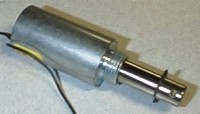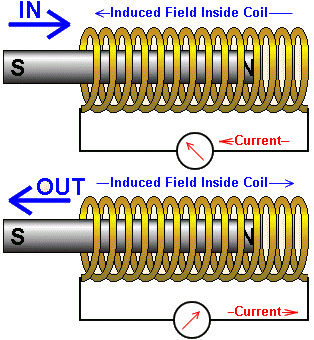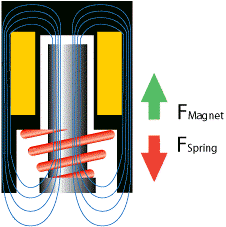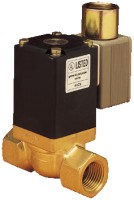
 Search Here
Search Here
MISC
Parts List
Robot Forum
Chat
Member Pages
Axon MCU
Robot Books
Shop
Contact
SKILLS
How To Build
A Robot
Tutorial
Calculators
Mechanics
Programming
Miscellaneous
Robots
Space
HARDWARE
Actuators
Batteries
Electronics
Materials
Microcontrollers
Sensors
SCIENCE
Robot Journals
Robot Theory
Conferences

The Solenoid
Solonoids are actuators capable of linear motion.
They can be electromechanical (AC/DC), hydraulic, or pneumatic driven -
all operating on the same basic principles.
Give it energy and it will produce a linear force. They are great for pushing buttons, hitting
keys on a piano, valve operators, and even for jumping robots. DC solonoids operate on the same
basic principles as a DC motor, so you
should read that tutorial before continuing. The difference between a solenoid
and a motor is that a solenoid is spring loaded and cannot rotate.

How Solenoids Work
Inside a solenoid is motor wire coiled in a special way (see image above). When you send an electric current
through this wire (energized), a magnetic field is created. The inner shaft of a solenoid is a piston like cylinder
made of iron or steel, called the plunger or slug (equivalent to an armature).
The magnetic field then applies a force to this plunger, either attracting or repeling it.
When the magnetic field is turned off, a spring then returns the plunger to its original state
(see image below).

Push and Pull Type Solenoids
There are two main types of solenoids. The type directly refers to the solenoid
start and energized positions, and is very important to understand.
In pull type solenoids (image above), the plunger is normally outside the solenoid because
the spring naturally forces the plunger out.
Yet when energized, the force 'pulls' the plunger into the solenoid. Push type solenoids
are the opposite, in that the spring forces the plunger into the solenoid, but when energized the
plunger is 'pushed' out.
Powering a Solenoid
You should probably have figured out by now that solenoids are polarized, in that they
only work when current is going the required direction. After all,
you cant make a push solenoid pull . . . This is great in that you do not need a
H-bridge or an expensive motor driver. A single
MOSFET and/or
relay will due.
You should also know that an electromechanical solenoid can melt if you power it too long. Always make sure that the power rating is not less than the voltage x current draw applied to your solenoid. The solenoid can of course exceed the power rating for short intermittent periods of time, but will overheat and melt with extended actuation periods. Consider heat sinking them if required.
Know that since solenoids have high inductance, when actuating one expect a short lived but very high power voltage spike to occur. This is just like driving a DC motor in one direction, then suddenly reversing the direction. Be aware of this when designing your control circuitry - making sure your circuit is high current, high voltage, and reverse current protected. After this short lived (~50ms) voltage spike, the voltage will balance at the hold voltage.

Mechanical Considerations
One very important thing to consider with a solenoid is the stroke. You need
to make sure the stroke distance (maximum distance a plunger can travel)
is sufficient for your application, but also to design
your mechanics to handle the sudden non-linear high speeds and high forces expected from such an actuator.
You may even need to consider dampening if this is a potential problem.
Society of Robots copyright 2005-2014